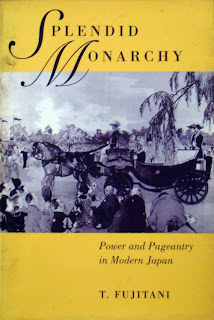Tenjin is known as the kami of scholarship. If you want help to pass exams you go to a Tenjin shrine.
Originally Sugawara no Michizane, a high-ranking government minister and poet in the late 9th Century, he died in virtual exile in Kyushu after falling from favor due to the machinations of his enemy Fujiwara no Tokihira. After his death a series of plagues and calamities befell Kyoto which were blamed on Sugiwara'a "angry ghost". To appease his ghost he was posthumously restored in rank and enshrined as a kami.
The Tenjin dance is a straightforward sword fight between Sugawara and Fujiwara, with Fujiwara being killed. The video I posted here is from the Tenjin dance.
Kagura Mask Index













